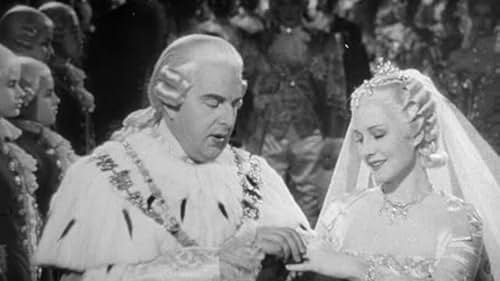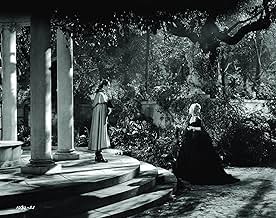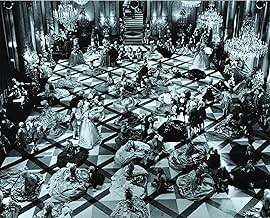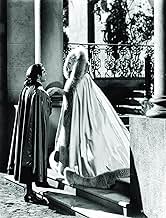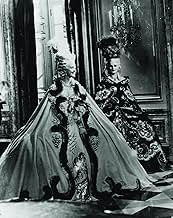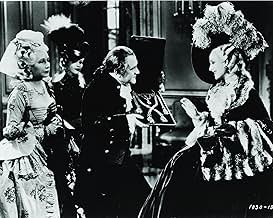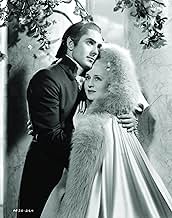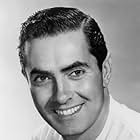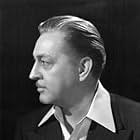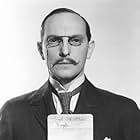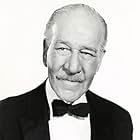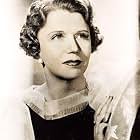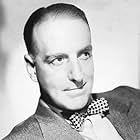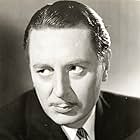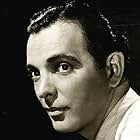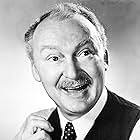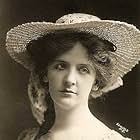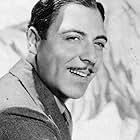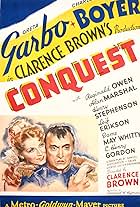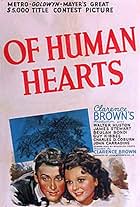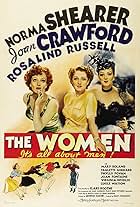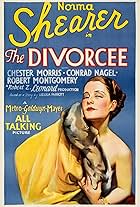IMDb RATING
7.3/10
3.4K
YOUR RATING
The tragic life of Marie Antoinette, who became queen of France in her late teens.The tragic life of Marie Antoinette, who became queen of France in her late teens.The tragic life of Marie Antoinette, who became queen of France in her late teens.
- Nominated for 4 Oscars
- 2 wins & 5 nominations total
Albert Dekker
- Comte de Provence
- (as Albert Van Dekker)
Storyline
Did you know
- TriviaAccording to Wikipedia, the movie had thousands of costumes and lavish set designs. Adrian visited France and Austria in 1937 researching the period. He studied the paintings of Marie Antoinette, even using a microscope on them so that the embroidery and fabric could be identical. Fabrics were specially woven and embroidered with stitches sometimes too fine to be seen with the naked eye. The attention to detail was extreme, from the framework to hair. Some gowns became extremely heavy due to the embroidery, flounces and precious stones used. Norma Shearer's gowns alone had a combined weight of over 1,768 lb., the heaviest being the wedding dress.
- GoofsAt the time of their wedding, the Dauphin, Louis, was 15 and Marie Antoinette was 14. Norma Shearer could (barely) get away with portraying a 14-year-old (as she portrayed a 13-year-old Juliet in ROMEO AND JULIET (1936) because many noble/royal females were more mature and had regal bearing), but Robert Morley looked 35, not 15.
- Quotes
Marie Antoinette: I once thought if I were queen, I'd be so happy. To be applauded and adored and obeyed. I don't want it now. I just want to be free. To be with you. To love you. I cannot wear a crown upon my heart.
- Alternate versions"Unrestored" film has now been restored and is available on DVD. When the film played the Carthay Circle in Los Angeles and the Astor Theatre in New York as a reserved seat "road show" attraction, the print ran eleven minutes longer than the generally available 149 minute Turner Library print. These eleven minutes contained an overture, entr'acte, and exit music, with an intermission immediately following Antoinette's emotional farewell to Fersen on the steps of Versailles. These remnants of the "road show" presentation have now been restored to the new Warner Bros. Home Video DVD, which runs a little over 157 minutes.
- ConnectionsEdited into Hollywood: The Dream Factory (1972)
Featured review
10. The script
Uncredited as a scriptwriter is novelist F. Scott Fitzgerald. His love scenes are extremely elaborate and exquisitely structured. They also introduce innovations that have since become clichés and the hallmark of 'women pictures' everywhere.
9. The actors
Barrymore is unforgettable as the regally cranky Louis XV. Morley gives one of his best interpretations. Schildkraut plays the best two-faced villain of his entire body of work. As for Power... remember the anecdote about the reporter asking romance-writer Barbara Cartland (Lady Di's stepmother) how she could possibly have written so many romance novels before she was even married and while she was still a virgin? Her answer was: 'Oh! We didn't have sex in those days. We had Tyrone Power.'
8. The director
Van Dyke was an expert at handling large crowds and acts of God. His directing style was a compromise between time-efficiency and giving the stars leeway as long as they respected the general style of the piece. This 'honour system' seems to have encouraged the actors to do their homework and present a credible, coherent performance every time. He also got an assist here from uncredited French genius Julien Duvivier.
7. Artistic direction
What can you say about a period film that tackled the challenge of recreating Versailles in the XVIIIth century on the MGM back lot? The production values are staggering. The Gallery of Mirrors is actually longer, higher and wider than the original. The costumes tread a fine line between historical accuracy (covered shoulders and revealed cleavage) and the requirements of the movie code (exposed shoulders were tolerated but bosoms had to be covered) but still manage to convey the era and the fairy-tale quality of Marie's court. The costumes were also specially constructed to shine, glitter and shimmer on black and white film.
6. Historical accuracy
The film's script is based (in part) on Stefan Zweig's groundbreaking biography of the Queen, "Marie Antoinette, Portrait of an Ordinary Woman", which tried to create the first accurate, adult, factual but Freudian-inspired narrative of the Queen's life by using documents and correspondence that had long been overlooked or suppressed. The book was the first to reveal Louis XVI's mechanical sexual problems, which prevented his consummating the marriage during its first seven years (until a slight surgical intervention) and explained in turn the Queen's extravagant spendthrift personality, in Freudian terms, as extreme sexual frustration. This story actually makes it to the screen in a large degree. Compare this to recent biopics like "A Beautiful Mind", whose scriptwriters conveniently 'forget' essential but non-mainstream plot elements like the fact that John Nash's paranoia may have been caused or amplified by the McCarthy era persecution of homosexuals. Some historical events have been telescoped into one another in order to accommodate the general American public's limited understanding of French history and the Orléans character was used to maintain tension by representing the turncoat part of the nobility which exploited MA for their own various agendas.
5. The music
Herbert Stothart may not be a household word but he did win an Oscar for his original score to "The Wizard of Oz", based, of course in part on Harold Arlen's melodies. Besides giving Miss Gulch/the Wicked Witch her immortal theme, he is also one half of the composing team that produced the operetta "Rose Marie". Stothart shines in two respects: the approximate recreation of XVIIIth century dance music in the court scenes, emphasizing the bored grandeur of the proceedings, and the psychological music that accompanies everything from exciting chase scenes to the love scenes between Shearer and Tyrone. Note especially the use of the harpsichord in a rupture scene between Orléans and MA and the use of the viola d'amour in the garden love scene.
4. The cinematography
MA is in 'glorious black and white', but especially in the escape to Varennes sequence which has the most credible - and suspenseful - 'day for night' sequence ever filmed. The marriage scene may have inspired Queen Elizabeth II's coronation. Also notable are the matte paintings, the overwhelming use of cranes to move in on particular characters in a crowd scene and the chiaroscuro of the last meeting with Fersen.
3. Detail and scope
Every scene has something special added to it in characterization, movement, rhythm, lighting, art direction, choreography (and not just in the dance scenes). The costumes could have starred in a picture by themselves.
2. The lost art of story-telling
This film was planned with intelligence and skill and was built around the principle stated by Selznick when filming GWTW: 'The secret of adapting a book to the screen is to give the impression that you are adapting a book to the screen.' Which means that many literary devices are used to give the story many interesting arcs and recurring themes. The story is well balanced in terms of spectacular action, recreation of important historical events (giving the impression of the passage of time) and intimate scenes. It is truly 'the intimate epic' that Mankiewicz's 'Cleopatra' was supposed to be. Need I add I am really dreading the Sofia Coppola version...
1. Norma Shearer
Norma Shearer is an unjustly forgotten star of the first magnitude. MA is permanent testament to her uncanny abilities. In this film she portrays the main character from the age of sixteen to her death as a prematurely aged and debilitated woman of 38, all with perfect verisimilitude, thanks to her magnificent vocal instrument and stage presence. As a fairy-queen, she makes Cate Blanchett as Galadriel (in LOTR) look like Carol Burnett's charwoman. Her virtuosity as the fated widowed Queen is all the more poignant when one realizes that at the time she was Thalberg's widow in her last husband-approved venture and that the Hollywood suits were rapidly closing in on her.
Uncredited as a scriptwriter is novelist F. Scott Fitzgerald. His love scenes are extremely elaborate and exquisitely structured. They also introduce innovations that have since become clichés and the hallmark of 'women pictures' everywhere.
9. The actors
Barrymore is unforgettable as the regally cranky Louis XV. Morley gives one of his best interpretations. Schildkraut plays the best two-faced villain of his entire body of work. As for Power... remember the anecdote about the reporter asking romance-writer Barbara Cartland (Lady Di's stepmother) how she could possibly have written so many romance novels before she was even married and while she was still a virgin? Her answer was: 'Oh! We didn't have sex in those days. We had Tyrone Power.'
8. The director
Van Dyke was an expert at handling large crowds and acts of God. His directing style was a compromise between time-efficiency and giving the stars leeway as long as they respected the general style of the piece. This 'honour system' seems to have encouraged the actors to do their homework and present a credible, coherent performance every time. He also got an assist here from uncredited French genius Julien Duvivier.
7. Artistic direction
What can you say about a period film that tackled the challenge of recreating Versailles in the XVIIIth century on the MGM back lot? The production values are staggering. The Gallery of Mirrors is actually longer, higher and wider than the original. The costumes tread a fine line between historical accuracy (covered shoulders and revealed cleavage) and the requirements of the movie code (exposed shoulders were tolerated but bosoms had to be covered) but still manage to convey the era and the fairy-tale quality of Marie's court. The costumes were also specially constructed to shine, glitter and shimmer on black and white film.
6. Historical accuracy
The film's script is based (in part) on Stefan Zweig's groundbreaking biography of the Queen, "Marie Antoinette, Portrait of an Ordinary Woman", which tried to create the first accurate, adult, factual but Freudian-inspired narrative of the Queen's life by using documents and correspondence that had long been overlooked or suppressed. The book was the first to reveal Louis XVI's mechanical sexual problems, which prevented his consummating the marriage during its first seven years (until a slight surgical intervention) and explained in turn the Queen's extravagant spendthrift personality, in Freudian terms, as extreme sexual frustration. This story actually makes it to the screen in a large degree. Compare this to recent biopics like "A Beautiful Mind", whose scriptwriters conveniently 'forget' essential but non-mainstream plot elements like the fact that John Nash's paranoia may have been caused or amplified by the McCarthy era persecution of homosexuals. Some historical events have been telescoped into one another in order to accommodate the general American public's limited understanding of French history and the Orléans character was used to maintain tension by representing the turncoat part of the nobility which exploited MA for their own various agendas.
5. The music
Herbert Stothart may not be a household word but he did win an Oscar for his original score to "The Wizard of Oz", based, of course in part on Harold Arlen's melodies. Besides giving Miss Gulch/the Wicked Witch her immortal theme, he is also one half of the composing team that produced the operetta "Rose Marie". Stothart shines in two respects: the approximate recreation of XVIIIth century dance music in the court scenes, emphasizing the bored grandeur of the proceedings, and the psychological music that accompanies everything from exciting chase scenes to the love scenes between Shearer and Tyrone. Note especially the use of the harpsichord in a rupture scene between Orléans and MA and the use of the viola d'amour in the garden love scene.
4. The cinematography
MA is in 'glorious black and white', but especially in the escape to Varennes sequence which has the most credible - and suspenseful - 'day for night' sequence ever filmed. The marriage scene may have inspired Queen Elizabeth II's coronation. Also notable are the matte paintings, the overwhelming use of cranes to move in on particular characters in a crowd scene and the chiaroscuro of the last meeting with Fersen.
3. Detail and scope
Every scene has something special added to it in characterization, movement, rhythm, lighting, art direction, choreography (and not just in the dance scenes). The costumes could have starred in a picture by themselves.
2. The lost art of story-telling
This film was planned with intelligence and skill and was built around the principle stated by Selznick when filming GWTW: 'The secret of adapting a book to the screen is to give the impression that you are adapting a book to the screen.' Which means that many literary devices are used to give the story many interesting arcs and recurring themes. The story is well balanced in terms of spectacular action, recreation of important historical events (giving the impression of the passage of time) and intimate scenes. It is truly 'the intimate epic' that Mankiewicz's 'Cleopatra' was supposed to be. Need I add I am really dreading the Sofia Coppola version...
1. Norma Shearer
Norma Shearer is an unjustly forgotten star of the first magnitude. MA is permanent testament to her uncanny abilities. In this film she portrays the main character from the age of sixteen to her death as a prematurely aged and debilitated woman of 38, all with perfect verisimilitude, thanks to her magnificent vocal instrument and stage presence. As a fairy-queen, she makes Cate Blanchett as Galadriel (in LOTR) look like Carol Burnett's charwoman. Her virtuosity as the fated widowed Queen is all the more poignant when one realizes that at the time she was Thalberg's widow in her last husband-approved venture and that the Hollywood suits were rapidly closing in on her.
- How long is Marie Antoinette?Powered by Alexa
Details
- Release date
- Country of origin
- Language
- Also known as
- María Antonieta
- Filming locations
- Chateau de Versailles, Versailles, Yvelines, France(palace backgrounds)
- Production company
- See more company credits at IMDbPro
Box office
- Budget
- $2,926,000 (estimated)
- Runtime2 hours 29 minutes
- Aspect ratio
- 1.37 : 1
Contribute to this page
Suggest an edit or add missing content


